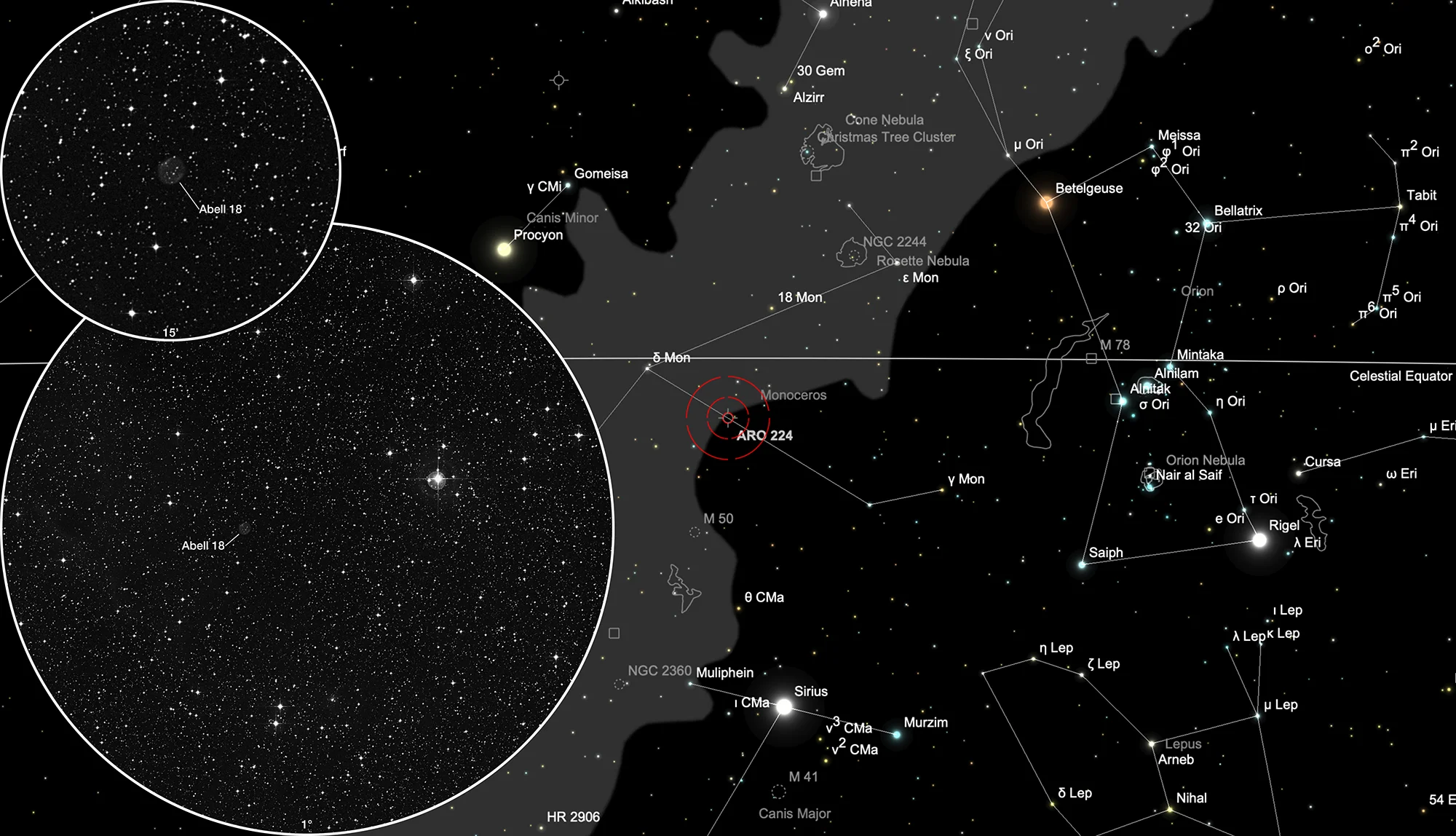Planetary Nebula Abell 18
History
The planetary nebula Abell 18 (PK 216-0.1) was discovered in 1955 by the American astronomer George Ogden Abell on the photo plates of the Palomar Observatory Sky Survey (POSS). In 1955 he published a first list of 13 globular clusters and the positions of 73 planetary nebulae. The PN first had the number 13 (A55 13). In 1966 Abell published a completed list including the size and description of the 86 planetary nebulae discovered on the POSS photo plates. The PN was then listed as number 18 (A66 18). He described the morphological appearance of the PN as «e» (a ring with gaps / incomplete ring). [331, 332]
The designation PK 216-0.1 originates from the two Czechoslovak astronomers Luboš Perek and Luboš Kohoutek, who in 1967 compiled a catalog of all the planetary nebulae of the Milky Way known at the time. [146]
Physical Properties
| Designations | PN G216.0-00.2: A 18, PK 216-00.1, A55 13, ARO 224, VV' 50 |
| Right Ascension (J2000.0) | 06h 56m 14s |
| Declination (J2000.0) | -02° 53' 08" |
| Dimensions | 73." (optical) |
| C-Star Magnitude | U: 20.46, B: 21.36, V: 20.90 |
| Discoverer | ABELL 1955 |
Finder Chart
The planetary nebula Abell 18 is in the constellation Monoceros. On 4 January it is in opposition to the Sun and crosses the meridian at local midnight. It is best observed from September to June.
